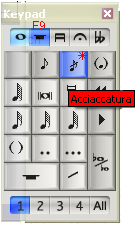

Over the past few months MakeMusic has been working to update their free Dolet® for Sibelius plug-in for exporting MusicXML files from Sibelius. My approach to Dorico is the same, and having to exchange modes is probably what slows me down.This press release just appeared on the website and I thought it worth sharing (source: ) I dont think of the note names when I use ms paper – I just hear in my head, oir sing, the next note and know where to write it. Perhaps it would be easier had I learnt solfège in France – I have friends who can sing Figaro Overture at top speed using this method!Īlt-click and R are the only fast way that I know to input notes, and they are basically what I learned in Sibelius. I dont understand this: I know what they all are in five clefs but it makes me feel so stupid when I have to do this to input notes. I am glad that I am not the only person who has to think hard about the letter names of notes. I use Dorico a lot, but for brainstorming I now returned to Sibelius because it’s so much faster. I have to think a lot more, not only about the root note name, but every other note name too, which makes this figure 3 to 4 seconds to input. I understand that the primary focus of Dorico has been engraving, and I’m very happy that my music looks so much more beautiful now since I switched to Dorico for engraving purposes. Thank you for taking the time to read my long post.

I have to think a lot more, not only about the root note name, bot every other note name too, which makes this figure 3 to 4 seconds to input. I would really like to switch to Dorico for this after 15 years of Sibelius, but it would be so nice if it weren’t 83% more complex (in this example, which is quite representative).

But I don’t have a piano and use computer keyboard note entry as my instrument of choice to compose music. This may not be a big deal if you are either an engraver (not brainstorming in Dorico) or a pianist (inputting chords by midi). Please keep reading when you think that this is not a big deal. In Dorico, the equivalent I know is: enter c e g space d f b space e g b escģ0% more keystrokes, 83% more different keys. When I come up with these chords, I can input them in under 1 second (far faster than realtime). That is 10 keystrokes, 5 of which are the same, which makes it extremely simple and without thinking. In Sibelius, that’s: c 3 3 d 3 4 e 3 3 esc For example, this simple figure of 9 notes: I’m still searching for the best equivalent of Sibelius’s briljant way to ‘stack’ thirds.

#Input notes sibelius 5 full
Because after 6 months of full time use, brainstorming as a composer is still more difficult in Dorico than in Sibelius


 0 kommentar(er)
0 kommentar(er)
